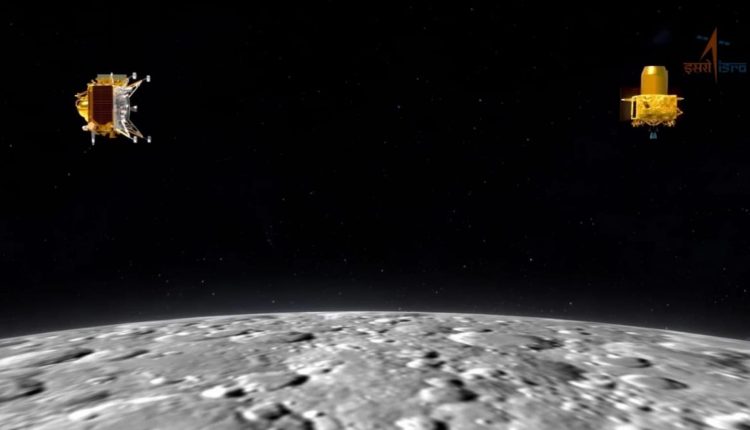Chandrayaan-3’s Lander Module established communication with the orbiter of the already present Chandrayaan-2 orbiter around the Moon, as it embarks on the historic “soft-landing” on the lunar surface, the Indian Space Research Organisation (ISRO) said. Chandrayaan-2 is the previous edition of India’s lunar mission which was launched in 2019, whose lander however lost the communication even after the successful orbit and de-orbit manoeuvers towards the Moon.
“‘Welcome, buddy!’ Ch-2 orbiter formally welcomed Ch-3 LM. Two-way communication between the two is established. MOX has now more routes to reach the LM. Update: Live telecast of Landing event begins at 17:20 Hrs. IST,” ISRO wrote on X.
The countdown for the highly anticipated landing on the Moon’s south pole has already started. Chandrayaan-3 has successfully completed all five orbit manoeuver steps and two deboosting manoeuvers, bringing it much closer to the lunar surface. The next task is the landing itself, scheduled for Wednesday (August 23). ISRO will broadcast the live telecast of the landing starting from Monday at 5.20 pm.
What will happen after landing?
The Lander Module, which includes the lander Vikram and the rover Pragyan, was separated from the Propulsion Module within the spacecraft on Thursday. The Propulsion Module which will remain in Moon’s orbit for months or years, has an attached payload known as the Spectro-polarimetry of Habitable Planet Earth (SHAPE), to study Earth’s spectral and polarimetric measurements from the moon’s orbit. In simpler terms, SHAPE will analyse certain signatures of Earth’s light.
Once the Lander Module reaches the Moon’s surface, the lander Vikram will deploy its payloads. These include Chandra’s Surface Thermophysical Experiment (ChaSTE) for measuring temperature and thermal conductivity. Another payload, the Instrument for Lunar Seismic Activity (ILSA), will measure seismic activity around the landing site. The Langmuir Probe (LP) will estimate plasma density and changes. A passive Laser Retroreflector Array from NASA will be used for lunar laser studies.
The rover Pragyan on the other hand, carries an Alpha Particle X-ray Spectrometer (APXS) and a Laser Induced Breakdown Spectroscope (LIBS) to determine the elements in the landing site’s vicinity.


